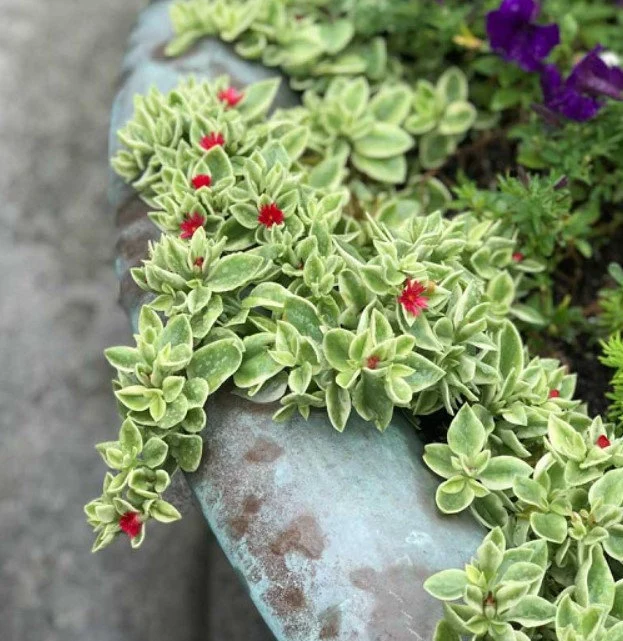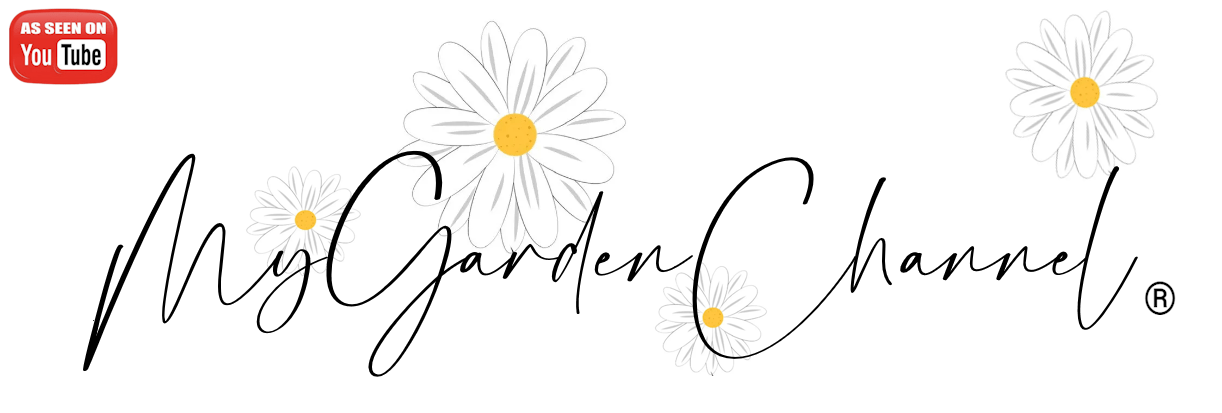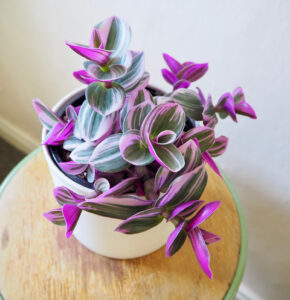
The Baby Sunrose (Aptenia cordifolia), also known as Heartleaf Ice Plant, is a beautiful and hardy succulent known for its vibrant green, heart-shaped leaves and small, bright pink to red flowers. This trailing plant is commonly used as ground cover, in hanging baskets, or as a low-maintenance houseplant. With proper care, the Baby Sunrose can thrive and provide year-round beauty in various climates. This guide will cover all aspects of Baby Sunrose care, ensuring a healthy and thriving plant.
1. Understanding Baby Sunrose
Growth Characteristics
- Scientific Name: Aptenia cordifolia
- Common Names: Baby Sunrose, Heartleaf Ice Plant
- Plant Type: Evergreen succulent
- Mature Size: 6-12 inches in height, spreading up to several feet
- Growth Rate: Fast-growing
- Foliage Color: Bright green, succulent heart-shaped leaves
- Flowers: Small, daisy-like pink to red flowers
Climate and Hardiness
- USDA Hardiness Zones: 9-11 (can be grown as an annual or indoor plant in cooler zones)
- Temperature Tolerance: Prefers warm climates, sensitive to frost
- Humidity Preferences: Thrives in dry to moderate humidity
2. Planting and Soil Requirements
Ideal Planting Time
- Best planted in spring or early summer to establish strong roots before cooler weather.
- Can be grown from seeds, cuttings, or nursery transplants.
Soil Preferences
- Prefers well-draining, sandy or loamy soil.
- A succulent or cactus potting mix is ideal to prevent water retention.
- Soil pH should be between 6.0 and 7.5 for optimal growth.
Planting Depth and Spacing
- Dig a hole slightly larger than the root ball.
- Space plants 12-18 inches apart if planting as ground cover.
- Water thoroughly after planting to help roots establish.
3. Light and Watering Requirements
Sunlight Needs
- Requires full sun (at least 6 hours per day) for best flowering and growth.
- Can tolerate partial sun, but may produce fewer flowers.
- Indoor plants should be placed near a bright, sunny window.
Watering Schedule
- Water deeply but infrequently, allowing the soil to dry out between waterings.
- Reduce watering in winter, as the plant enters a dormancy period.
- Overwatering can lead to root rot, so ensure proper drainage.
4. Fertilization and Nutrient Requirements
Best Fertilizer Choices
- Use a balanced, diluted liquid fertilizer (10-10-10 or 20-20-20) once a month during the growing season.
- Organic options such as compost tea or fish emulsion work well.
- Avoid high-nitrogen fertilizers, which can encourage excessive leaf growth at the expense of flowers.
Feeding Schedule
- Fertilize once in early spring to encourage new growth.
- A second application in mid-summer can boost flowering.
- Stop fertilizing in fall and winter as growth slows.
5. Pruning and Maintenance
Pruning Techniques
- Trim back leggy or overgrown stems to maintain shape and encourage bushier growth.
- Deadheading spent flowers can prolong the blooming period.
- Best time for pruning: Spring and summer, but light pruning can be done year-round.
Cleaning the Leaves
- Dust or rinse leaves occasionally to keep them clean and free from pests.
- Avoid excessive moisture on leaves to prevent fungal issues.
6. Propagation Methods
Growing from Cuttings
- Take a 3-4 inch cutting from a healthy plant.
- Allow the cutting to dry for 24 hours to prevent rot.
- Plant in well-draining soil and water lightly until roots establish.
Propagation by Division
- Gently separate plant clusters and replant in fresh soil.
- Water well to help plants establish in their new location.
7. Pest and Disease Management
Common Pests
- Aphids: Can be removed with insecticidal soap or neem oil.
- Spider Mites: Increase humidity and mist leaves occasionally.
- Mealybugs: Wipe with alcohol-soaked cotton swabs or use neem oil.
Common Diseases
- Root Rot: Caused by overwatering; ensure soil is well-draining.
- Powdery Mildew: Improve air circulation and avoid overhead watering.
- Leaf Spot: Remove affected leaves and treat with a mild fungicide if needed.
8. Seasonal Care and Overwintering
Spring and Summer Care
- Provide regular watering and fertilization.
- Monitor for pests and diseases.
- Prune to maintain shape and encourage new growth.
Fall and Winter Care
- Reduce watering as temperatures drop.
- If grown in a pot, move indoors to a warm, sunny location before the first frost.
- Use a light mulch around outdoor plants in cooler climates to protect roots.
9. Display and Companion Planting
Ideal Display Options
- Hanging Baskets: Showcases trailing growth beautifully.
- Ground Cover: Spreads quickly and suppresses weeds.
- Rock Gardens: Complements other drought-tolerant plants.
Companion Plants
- Sedum: Matches Baby Sunrose’s low-water needs.
- Aloe Vera: Adds variety to succulent gardens.
- Lavender: Offers contrast in color and texture.
Search
Proudly powered by WordPress






